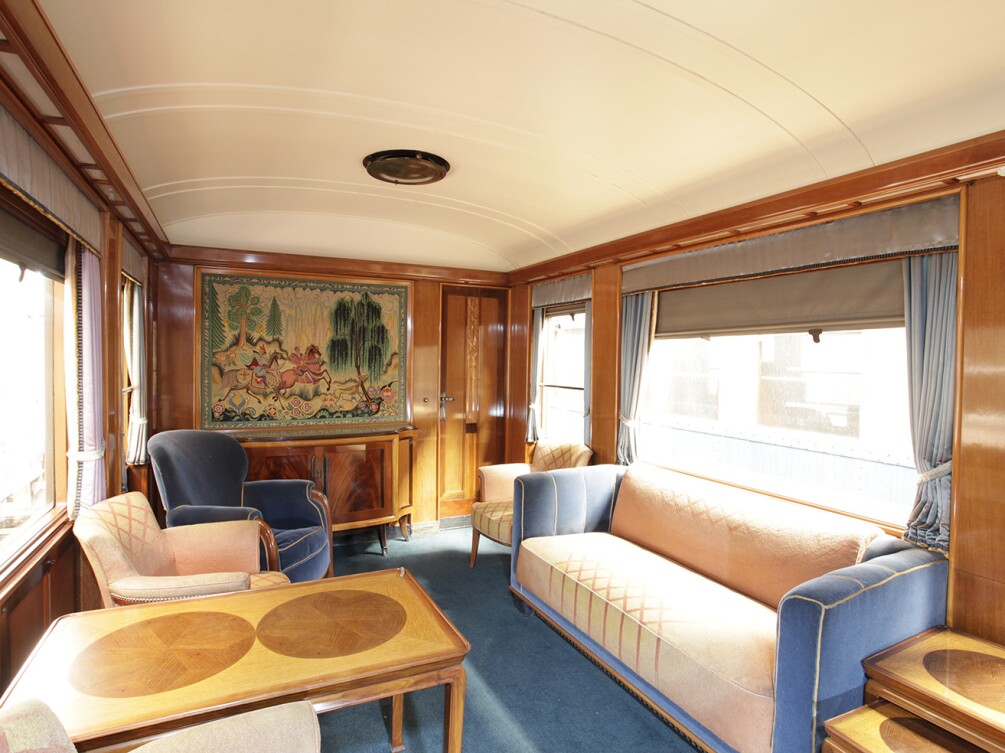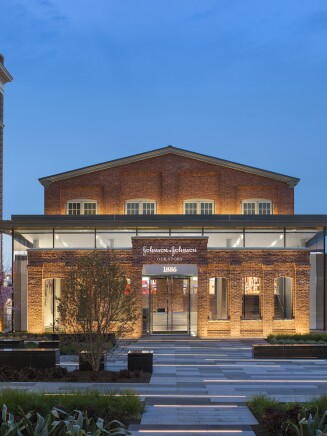This month, the Franklin Institute in Philadelphia will offer museumgoers the chance to glimpse one of the greatest archaeological finds of our time: a battalion of thousands of handmade clay statues dating to the Qin dynasty in 210 BCE known as the Terracotta Army.
The institute’s exhibit, “Terracotta Warriors of the First Emperor,” which is being sponsored by Janssen Pharmaceuticals, part of the Johnson & Johnson family of companies, will be on display through March 4, 2018.
But this won’t be Janssen’s first encounter with the Chinese Warriors.
Nearly 10 years ago, the company actually played a pivotal role in restoring the statues, using products it developed in a Belgium-based lab to wipe out damaging fungi that had settled on the 2,000-year-old army. The project ultimately led Janssen to work on dozens of other cultural restorations around the world.
This lasting company commitment to protecting historic sites can be traced to its eponymous founder: Paul Janssen.
“Paul was not only a brilliant researcher and savvy businessman, but he was also devoted to helping people when they came to him with a problem,” recalls Jan Bosselaers, a researcher who worked on the Terracotta Warrior project. “It was because of him that Janssen’s Preservation and Material Protection (PMP) division, which started out developing antifungal products for fruits and vegetables, broadened its scope to other materials, like wood and stone.”
That spirit led Bosselaers and his team to begin lending their pharmaceutical knowledge to museums and other cultural preservation organizations to help restore ancient artifacts ranging from statues and mummies to temples.
Step back in time with us as we look at some world treasures that are thriving, thanks to Janssen’s commitment to protecting historical monuments.
1.
Terracotta Warriors, Xi’an, China

Paul Janssen made his first trip to China in 1976—two years after the famed Terracotta Warriors were first unwittingly unearthed there by a farmer digging a well. The scientist had arranged a private visit to meet the archivists who were restoring them in a field 15 miles away from Janssen’s factory in Xi’an.
Twenty-five years later, the excavation site had dramatically increased in size. It was as big as 45 football fields and included a museum where tourists could watch archaeologists meticulously piece together more than 8,000 statues. Chinese authorities realized that various fungi had decided to call the statues home, slowly damaging them. What’s more, exposure to the 20th-century air and the tourists was only making the situation worse. So they contacted Janssen for help.
A culture and history buff who loved a good challenge, he promised to come up with a solution.
Over time, certain fungi produce acids that would have slowly eaten away at the material and caused extensive damage. We might not have been left with such stunning artifacts if it hadn’t been for Paul Janssen.
In 1999, Janssen tasked Bosselaers and his colleagues with formulating an effective product to zap the army’s fungi. They decided on imazalil and propiconazole—two antifungal agents developed by Janssen scientists that were traditionally used to fight fungi on fruits, vegetables and other crops. After years of tinkering, they came up with the perfect concentrations.
“We must have developed several dozen formulations, testing them on samples of terracotta pots and tiles, before we settled on one that was effective but wouldn’t harm the material,” Bosselaers says.
Chinese researchers began to spray the antifungals into the soil around the Warriors to avoid damaging them, and by 2005, the Warriors were fungus-free, thanks to this and other simultaneous interventions, like controlling the humidity in the museum where the soldiers live.
Bosselaers believes Janssen’s initiative on the project was invaluable. “Over time, certain fungi produce acids that would have slowly eaten away at the material and caused extensive damage,” he says. “We might not have been left with such stunning artifacts if it hadn’t been for Paul Janssen.”
2.
UNESCO World Heritage Site, Hampi, India

The successful restoration of the Chinese terracotta warriors put Janssen on the map as cultural preservation specialists. So in 2006, archaeologists from Hampi, India, got in touch with the PMP team seeking advice on another—perhaps even more challenging—project.
The Indian scientists described a magnificent 16th-century city on the banks of the Tungabhadra River that was home to more than 500 stunning monuments, including intricately designed temples, palaces and pavilions. During its peak, it was one of the wealthiest cities in the world, and had since been designated a UNESCO World Heritage Site.
But the years had started to take a toll on the ancient city. There were lichens and mold growing on the stone monuments and insects gnawing the wood structures.
“Hampi was the most difficult project I worked on because there was such a diversity of threats there—although the terracotta army included thousands of warriors, we were only dealing with fungi,” Bosselaers recalls.
Working together with the archaeologists, his team recommended a plan of action: antimicrobial agents that could zap the mold and herbicides for weeds that were overtaking the site. Meanwhile, Janssen also funded the Raymond Lemaire International Centre for Conservation at the University of Leuven, which continues to advise the Hampi team to this day.
3.
Royal Trains, Belgium

In addition to international projects, Bosselaers and his team were tapped for cultural restorations right in their home country of Belgium. Their first assignment: tackling the mold and fungi that had settled inside train cars used by Belgian monarchs in the 19th and 20th centuries.
King Leopold II, known for his excess and elaborate plans to embellish the capital of Brussels, made sure his trains received the royal treatment, too. “His cars were filled with fine, dark wood furniture, intricately patterned textiles and expensive paintings,” Bosselaers says. “These trains were very different from the ones that regular Belgians took.”
Leopold II and Leopold III’s royal rail cars were in need of some TLC, so Janssen’s researchers used a smoke generator to pump imazalil into the cars to treat the precious fabrics and furniture within.
Leopold III, who ruled 25 years later, had his cars outfitted in a sleeker, more modern style that was prized in the 20th century, with lighter woods and less ornate decor.
Over time, both Leopold II and Leopold III’s royal rail cars were in need of some TLC, so Janssen’s researchers used a smoke generator to pump imazalil—invented by Janssen chemists in 1969—into the cars to treat the precious fabrics and furniture within.
The application was a success and the trains are now on display in Train World, a railway museum in Brussels.
4.
Museo de El Carmen Mummies, Mexico City, Mexico

This monastery-turned-museum in a quiet neighborhood of Mexico City houses objects that you might expect to find in a former place of worship: religious art, altar pieces, sculptures, carvings. But the museum’s crypt also features a dozen rather unexpected figures: mummies.
The mummies are thought to be the remains of the friars and benefactors of the 17th-century Carmelite monastery that were left behind after it was abandoned in 1861. The unique composition of the soil there essentially dehydrated the bodies and preserved them—but even such well-preserved mummies weren’t immune to wear and tear.
A few years ago, Janssen was called on to advise the museum about fungi that were growing on the remains. After assessing the situation, researchers provided the museum with imazalil smoke generators, which dispersed tiny particles of the antifungal agent into the crypt’s air, wiping out the fungi.
In 2012, the crypt was fully restored and opened to the public for the first time in its history.




